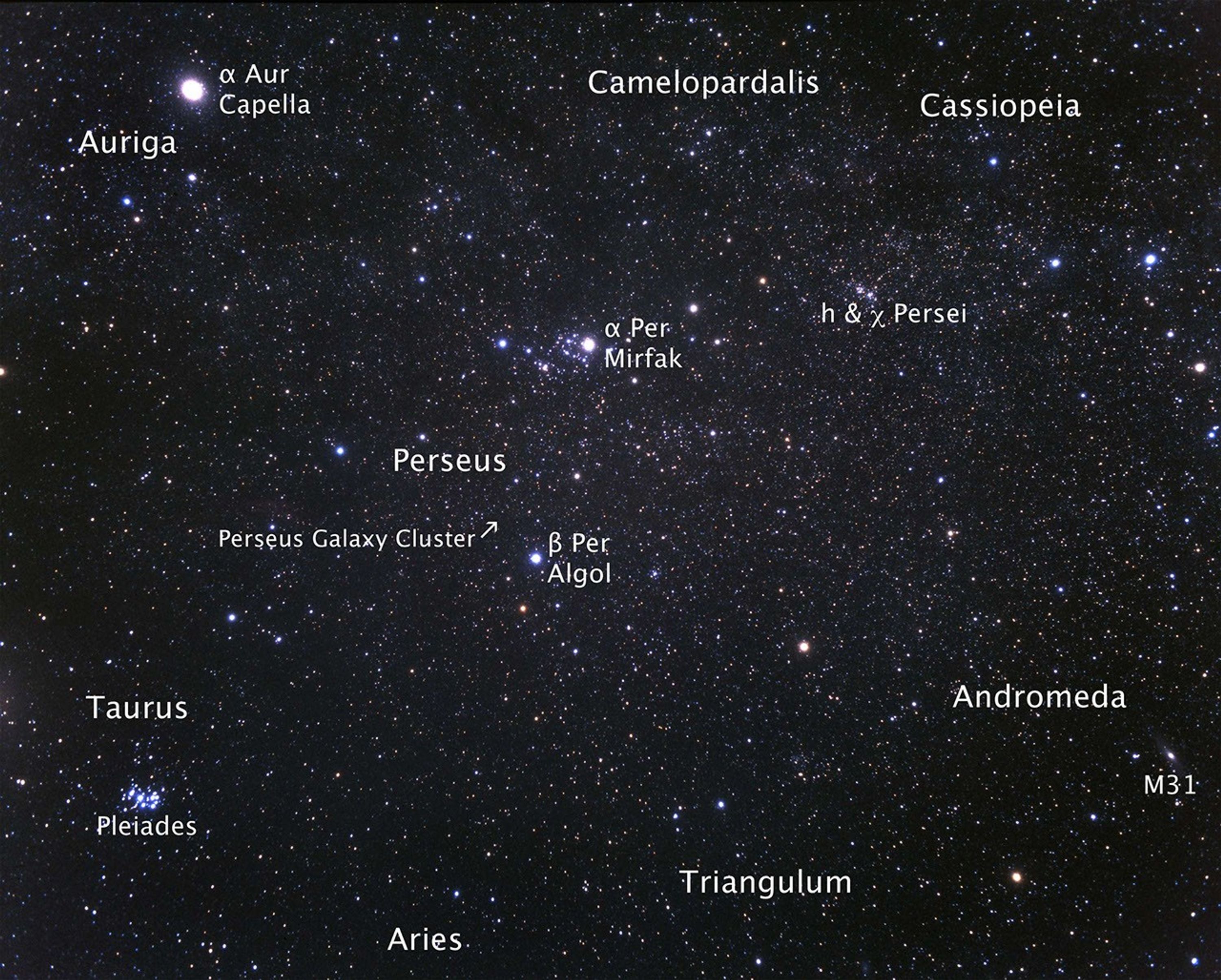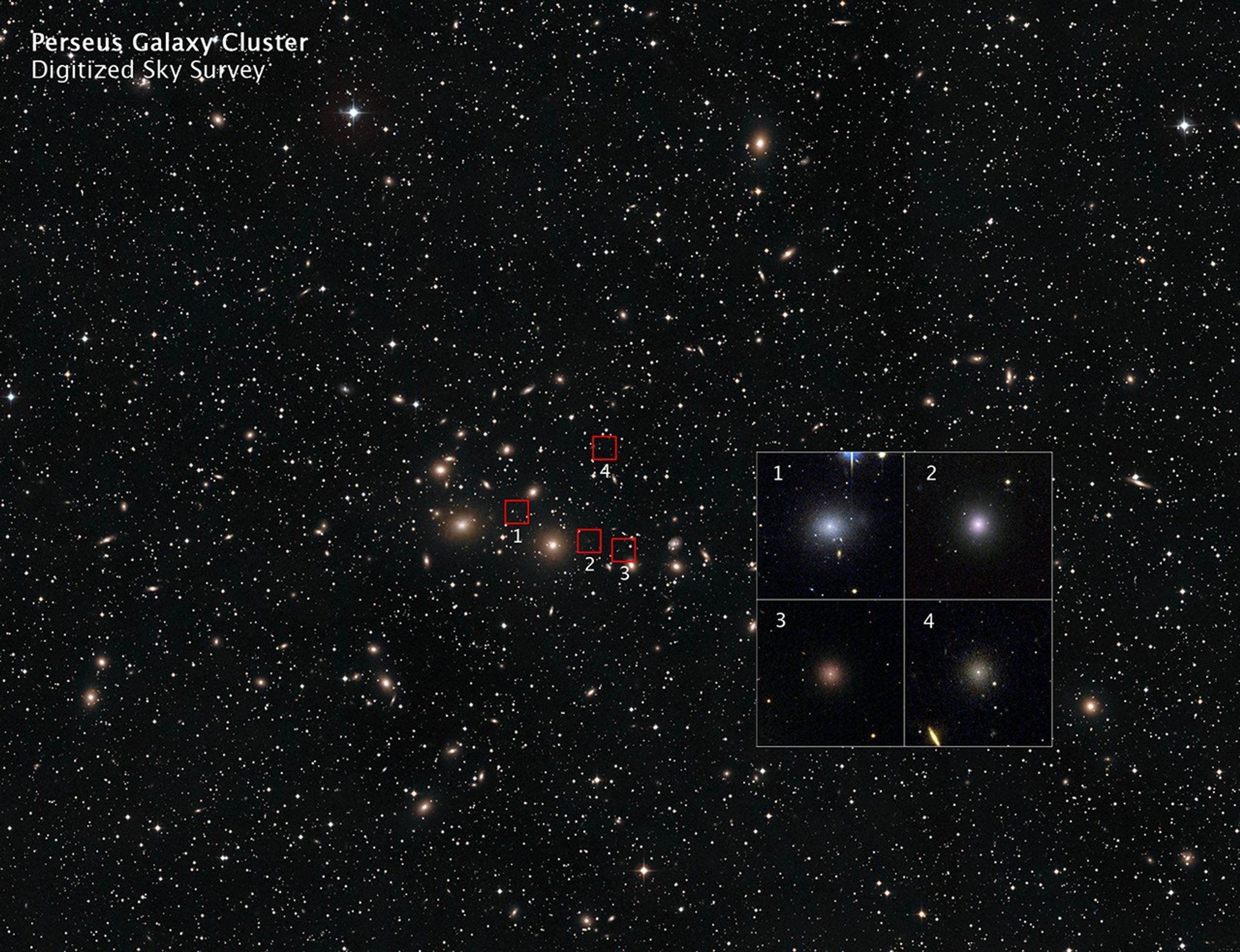1 min read
Perseus Cluster Dwarf Galaxies
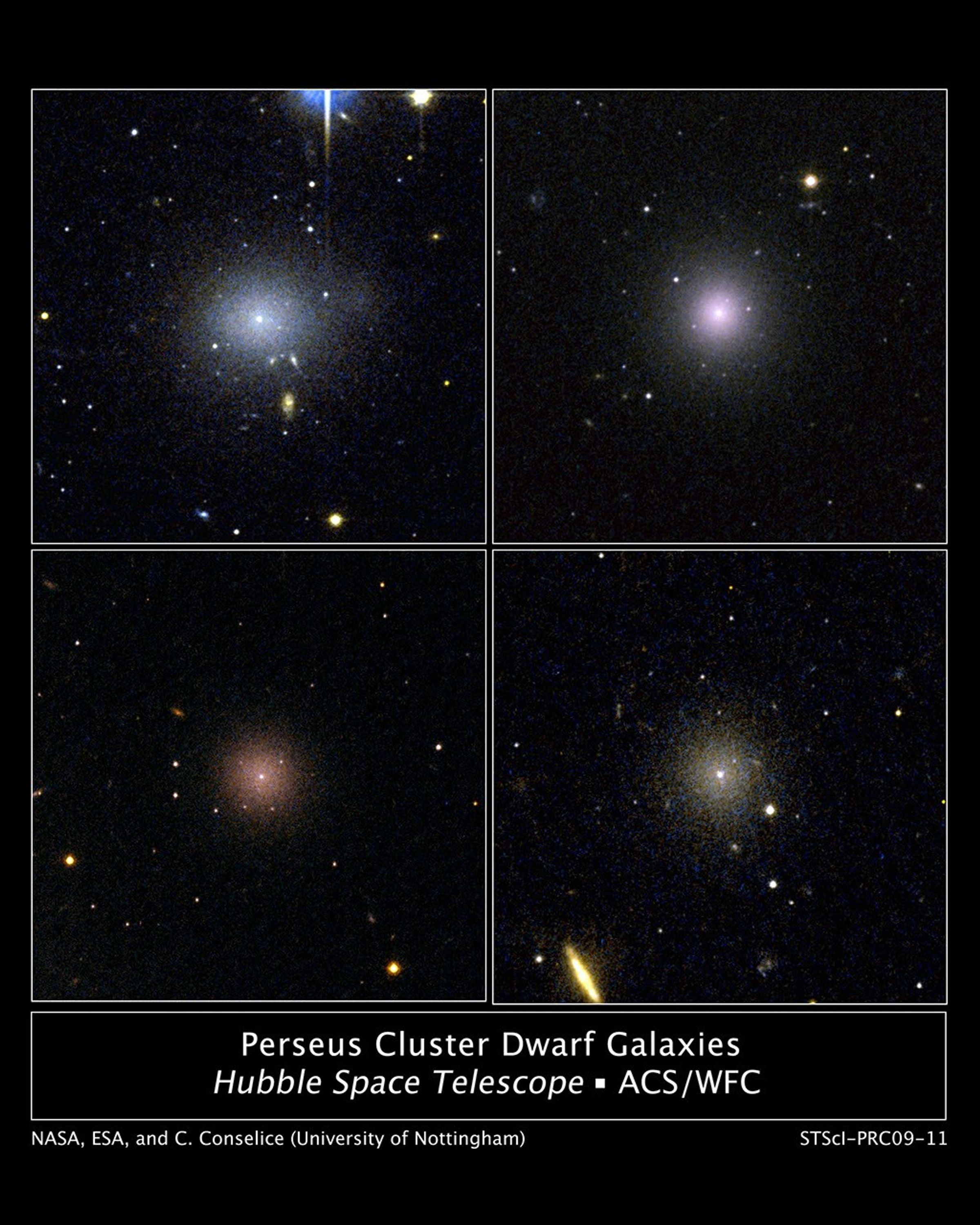
These four dwarf galaxies are part of a census of small galaxies in the tumultuous heart of the nearby Perseus galaxy cluster.
The galaxies appear smooth and symmetrical, suggesting that they have not been tidally disrupted by the pull of gravity in the dense cluster environment. Larger galaxies around them, however, are being ripped apart by the gravitational tug of other galaxies.
The images, taken by NASA's Hubble Space Telescope, are evidence that the undisturbed galaxies are enshrouded by a "cushion" of dark matter, which protects them from their rough-and-tumble neighborhood.
Dark matter is an invisible form of matter that accounts for most of the universe's mass. Astronomers have deduced the existence of dark matter by observing its gravitational influence on normal matter, consisting of stars, gas, and dust.
Observations by Hubble's Advanced Camera for Surveys spotted 29 dwarf elliptical galaxies in the Perseus Cluster, located 250 million light-years away and one of the closest galaxy clusters to Earth. Of those galaxies, 17 are new discoveries.
The images were taken in 2005.
About the Object
- ConstellationConstellationOne of 88 recognized regions of the celestial sphere in which the object appears.Perseus
- DistanceDistanceThe physical distance from Earth to the astronomical object. Distances within our solar system are usually measured in Astronomical Units (AU). Distances between stars are usually measured in light-years. Interstellar distances can also be measured in parsecs.250 million light-years (77 megaparsecs)
- DimensionsDimensionsThe physical size of the object or the apparent angle it subtends on the sky.Each individual galaxy image is 25 arcseconds (30,000 light-years or 9,200 parsecs) wide.
About the Data
- Data DescriptionData DescriptionProposal: A description of the observations, their scientific justification, and the links to the data available in the science archive.
Science Team: The astronomers who planned the observations and analyzed the data. "PI" refers to the Principal Investigator.This image was created from HST data from proposal 10210: C. Conselice (University of Nottingham, U.K.), S. De Rijcke (University of Ghent, Belgium), and E. Held (Astronomical Observatory of Padua, Italy). The science team comprises: S. Penny and C. Conselice (University of Nottingham, U.K.), S. De Rijcke (University of Ghent, Belgium), and E. Held (Astronomical Observatory of Padua, Italy). - InstrumentInstrumentThe science instrument used to produce the data.HST>ACS/WFC
- Exposure DatesExposure DatesThe date(s) that the telescope made its observations and the total exposure time.January and February 2005, Exposure Time: 13 hours
- FiltersFiltersThe camera filters that were used in the science observations.F814W (I) and F555W (V)
- Object DescriptionObject DescriptionThe type of astronomical object.Dwarf Galaxies
- Release DateMarch 12, 2009
- Science ReleaseHubble Provides New Evidence for Dark Matter Around Small Galaxies
- Credit

The image is a composite of separate exposures made by the ACS instrument on the Hubble Space Telescope. Two filters were used to sample broad wavelength ranges. The color results from assigning different hues (colors) to each monochromatic image. In this case, the assigned colors are: Yellow: F814W (I) Blue: F555W (V)

Related Images & Videos
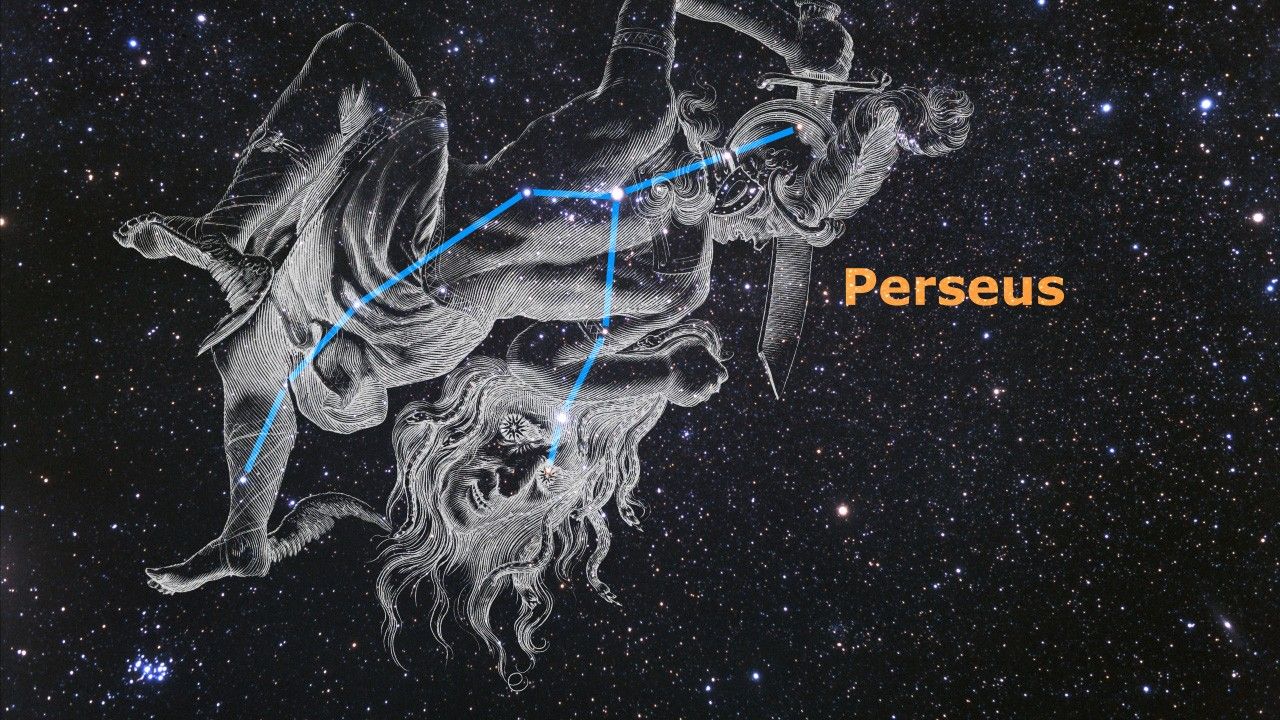
Zoom into Perseus Cluster Dwarf Galaxies
A huge cluster of galaxies lies in the northern constellation of Perseus. At a distance of about 300 million light-years away, it is one of the nearest galaxy clusters. The entire cluster contains thousands of galaxies and is considered to be one of the most massive objects in...
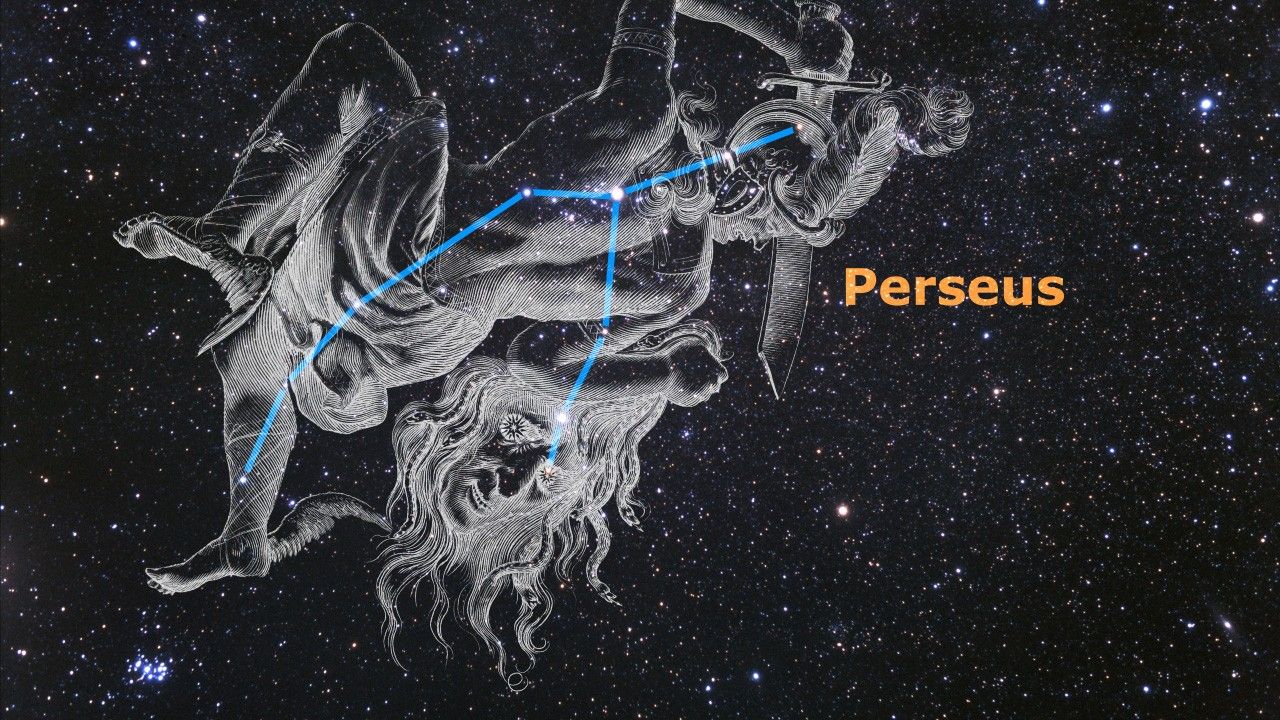
Zoom into Perseus Cluster Dwarf Galaxies (Narrated)
A huge cluster of galaxies lies in the northern constellation of Perseus. At a distance of about 300 million light-years away, it is one of the nearest galaxy clusters. The entire cluster contains thousands of galaxies and is considered to be one of the most massive objects in...
Share
Details
Claire Andreoli
NASA’s Goddard Space Flight Center
Greenbelt, Maryland
claire.andreoli@nasa.gov











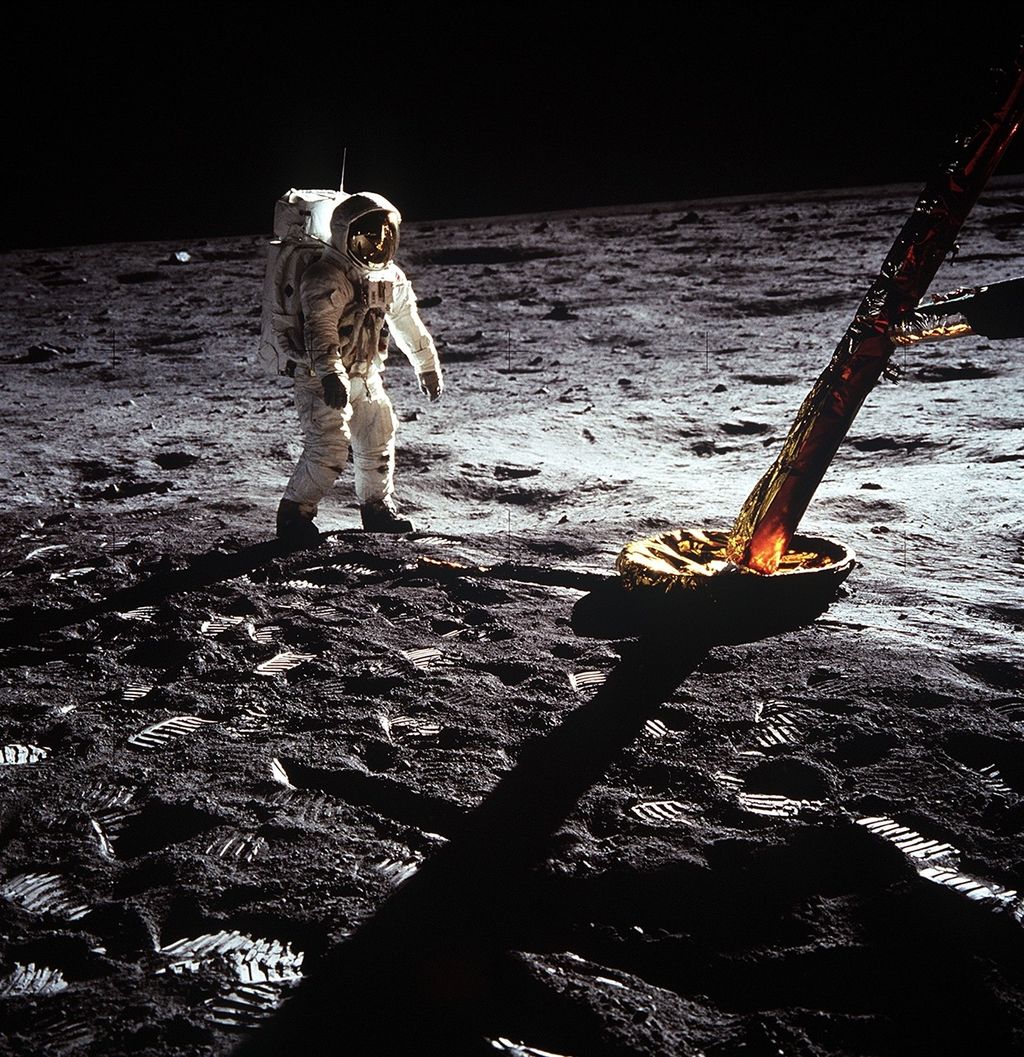

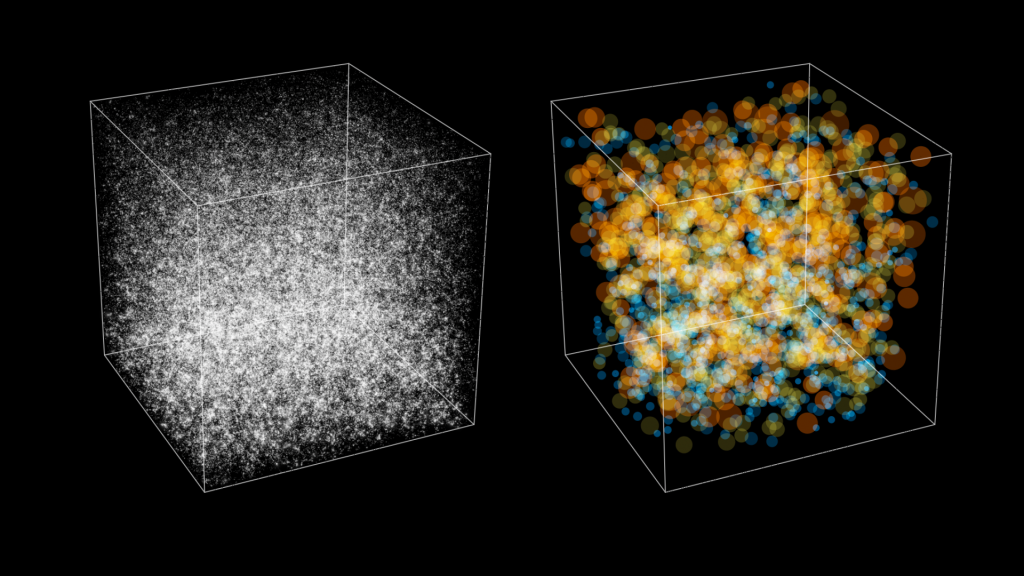
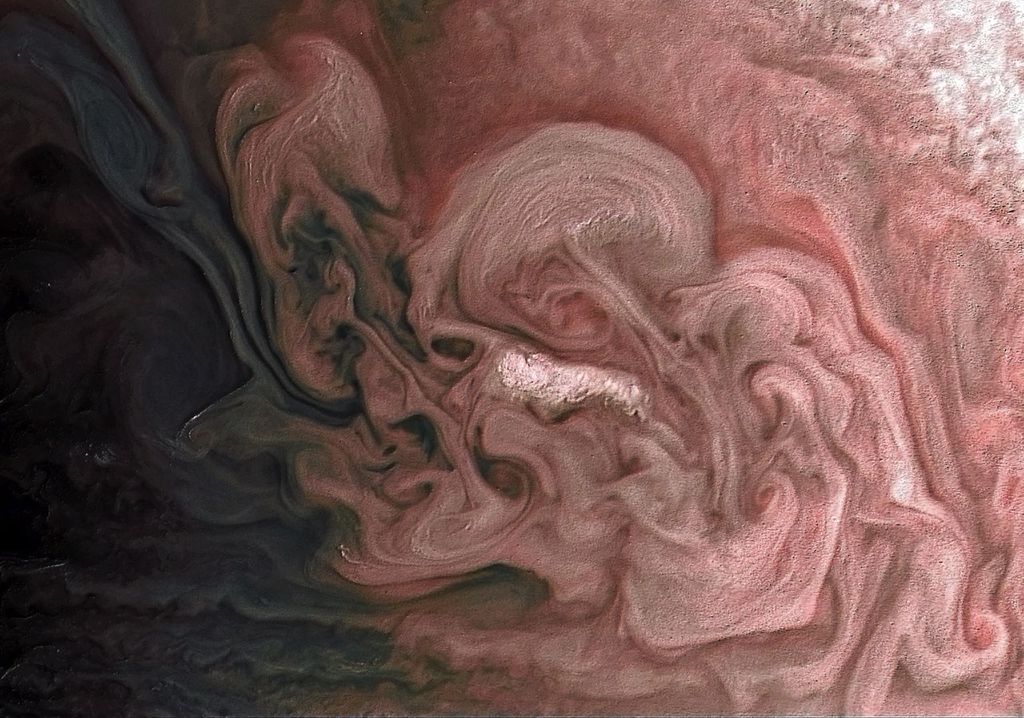












![Perseus Dwarf Galaxy [CGW2003] J031931.7+4131](https://assets.science.nasa.gov/dynamicimage/assets/science/missions/hubble/releases/2009/03/STScI-01EVVP11KE3K66MN2TDWRSNDSN.tif?w=500&h=500&fit=clip&crop=faces%2Cfocalpoint)
![Perseus Dwarf Galaxy [CGW2003] J031910.4+4129](https://assets.science.nasa.gov/dynamicimage/assets/science/missions/hubble/releases/2009/03/STScI-01EVVP1A3GHFY9FAHBCGWARDB2.tif?w=500&h=500&fit=clip&crop=faces%2Cfocalpoint)
![Perseus Dwarf Galaxy [CGW2003] J031900.4+4129](https://assets.science.nasa.gov/dynamicimage/assets/science/missions/hubble/releases/2009/03/STScI-01EVVP0X4V65FMG7CA84V4KDPY.tif?w=500&h=500&fit=clip&crop=faces%2Cfocalpoint)
![Perseus Dwarf Galaxy [CGW2003] J031905.2+4134](https://assets.science.nasa.gov/dynamicimage/assets/science/missions/hubble/releases/2009/03/STScI-01EVVP1DWG8NDB44Q2PS198V9Y.tif?w=500&h=500&fit=clip&crop=faces%2Cfocalpoint)

